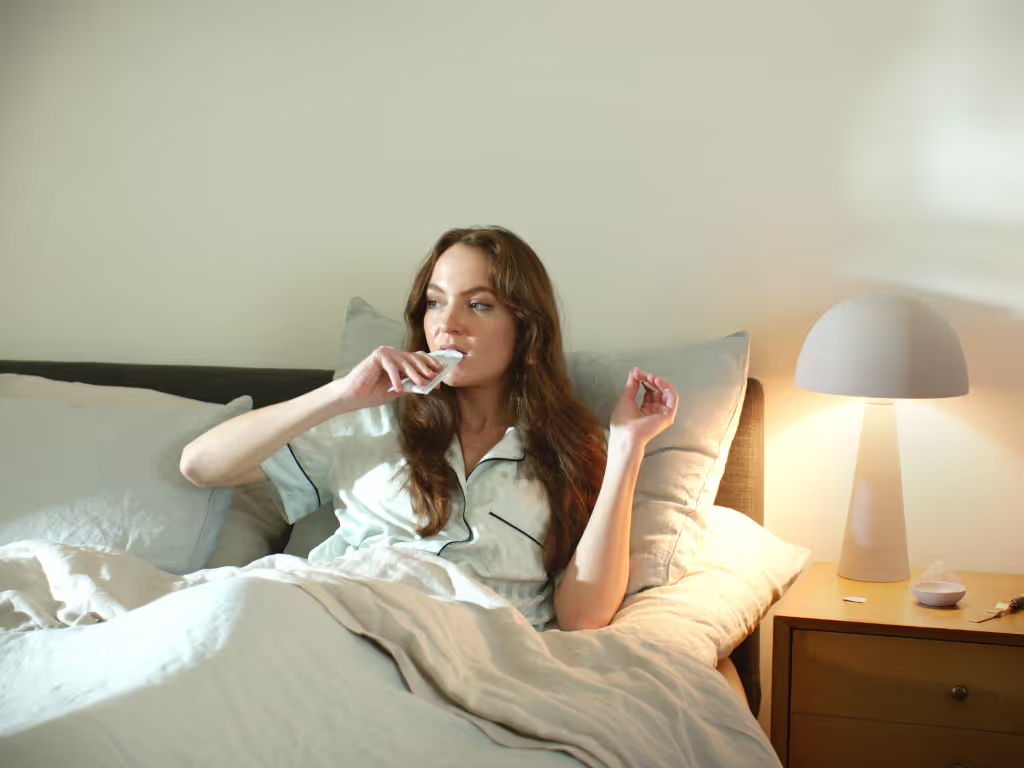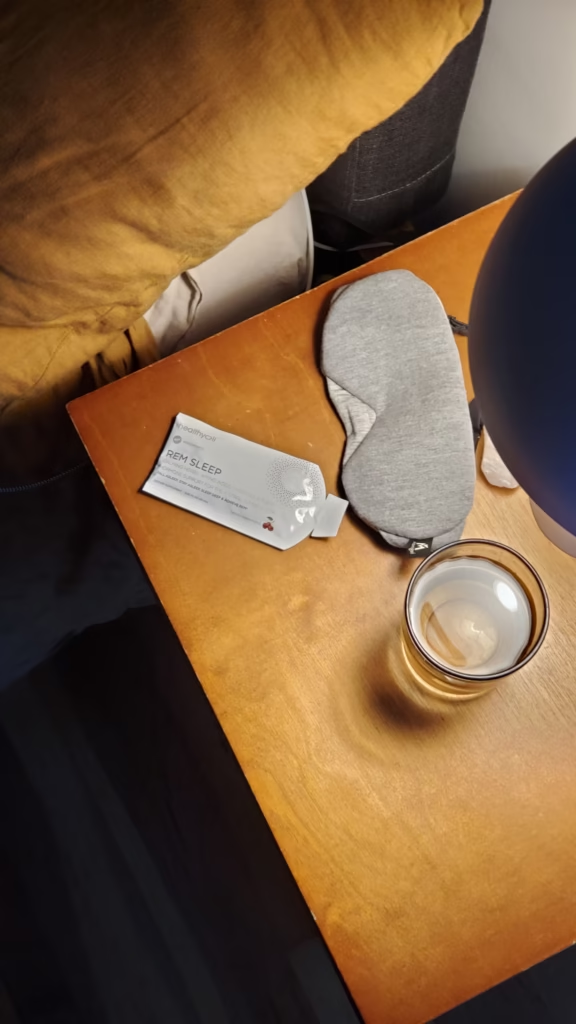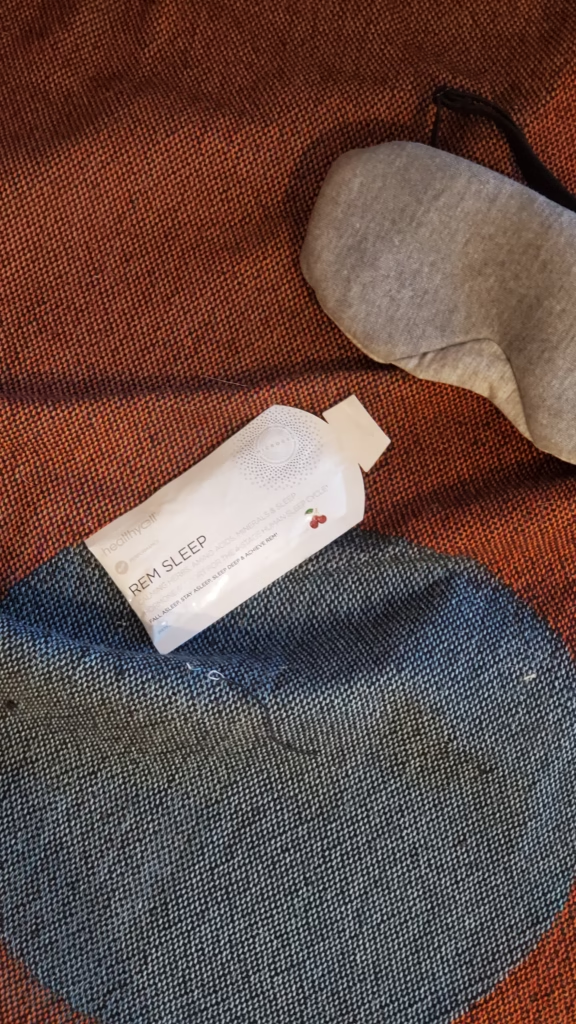Sleep is one of those things we all crave but often struggle to get right. Between late-night scrolling, stress, and the occasional coffee too close to bedtime, a good night’s rest can feel like chasing a unicorn.
That’s why I was intrigued when I stumbled across Healthycell REM Sleep, a gel-based sleep supplement promising to help you fall asleep faster, stay asleep longer, and wake up feeling refreshed.
But does it actually work? To find out, I decided to track my sleep for a week using my Fitbit Versa 2 and put Healthycell to the test. Here’s my honest, in-depth review of the experience, backed by research and my own data.
Why I Wanted to Try Healthycell REM Sleep

I’ve always been curious about sleep aids, but I’m wary of anything that feels too heavy or leaves me groggy in the morning. Healthycell REM Sleep caught my attention because it’s marketed as a natural, non-habit-forming supplement that supports all four stages of sleep: falling asleep, light sleep, deep sleep, and REM sleep.
The ingredients list reads like a who’s-who of sleep-friendly nutrients—melatonin, lemon balm, valerian root, L-theanine, and more. Plus, it comes in a cherry-flavored gel pack, which sounded more convenient than swallowing pills.
At $49.95 for a 30-day supply, it’s pricier than your average melatonin bottle, so I wanted to make sure it was worth the investment. My goal? To see if it could help me fall asleep faster, improve my sleep quality, and make me feel more rested. I also wanted to compare it to cheaper alternatives like basic melatonin or valerian supplements I’d tried before.
Setting Up the Experiment
To get a clear picture, I decided to track my sleep for seven days while taking Healthycell REM Sleep every night. I used my Fitbit Versa 2, which monitors sleep duration, sleep stages (light, deep, and REM), and restlessness. Fitbit’s sleep scores aren’t perfect, but they give a decent snapshot of how well I’m sleeping. For context, I compared this week’s data to the previous three weeks, where I wasn’t taking any sleep aids, and to a week when I used a $10 melatonin supplement.
Here’s the plan:
- Take Healthycell REM Sleep 30 minutes before bed each night.
- Track sleep data using Fitbit Versa 2 (total sleep time, sleep stages, sleep score).
- Note how I feel each morning and throughout the day.
- Compare results to baseline weeks and melatonin week.
I also made sure to keep my routine consistent—no late-night caffeine, no major diet changes, and a regular bedtime around 11 PM. Let’s dive into what happened.
My Experience Taking Healthycell REM Sleep
The First Night: Easy to Take, Subtle Effects
The gel pack is small and easy to squeeze into your mouth—no water needed, which is a win for convenience. The cherry flavor tastes a bit like cough syrup, but it’s not unpleasant. I took it at 10:30 PM and hopped into bed by 11. I didn’t feel a dramatic “knockout” effect, but I did notice I felt calmer than usual. I fell asleep in about 15 minutes, which is faster than my typical 20-25 minutes. My Fitbit recorded 7 hours and 5 minutes of sleep, with a sleep score of 80—solid, but not life-changing.
Days 2-4: Starting to Notice Patterns
By the third night, I was falling asleep in 10-12 minutes, which felt like a small victory. My sleep scores hovered around 80-82, and I averaged 7 hours and 10 minutes of sleep per night. One thing I noticed was fewer wake-ups during the night. Normally, I stir a couple of times, but with Healthycell, I stayed asleep more consistently. However, I wasn’t waking up feeling like I’d just had the best sleep of my life. I felt decent—maybe a touch more refreshed—but not drastically different.
Days 5-7: The Data Tells a Story
By the end of the week, my average sleep time was 7 hours and 6 minutes, about 15 minutes more than my baseline weeks (6 hours and 51 minutes) and 13 minutes more than the melatonin week (6 hours and 53 minutes). My sleep score averaged 81, which is great for me, as I usually sit around 75-78. The standout was my deep sleep time, which increased by about 10 minutes per night compared to baseline. REM sleep looked good too, but my Fitbit showed more light sleep than I’d like, which might explain why I didn’t feel amazingly rested.
Digging Into the Data
Let’s break down the numbers from my Fitbit:
- Total Sleep Time: 7 hours, 6 minutes (vs. 6 hours, 51 minutes baseline; 6 hours, 53 minutes melatonin).
- Sleep Score: 81 (vs. 76 baseline; 78 melatonin).
- Deep Sleep: 1 hour, 10 minutes (vs. 1 hour baseline; 1 hour, 5 minutes melatonin).
- REM Sleep: 1 hour, 40 minutes (vs. 1 hour, 35 minutes baseline; 1 hour, 38 minutes melatonin).
- Restless Periods: 3 per night (vs. 5 baseline; 4 melatonin).
The data suggests Healthycell helped me sleep a bit longer and improved my sleep quality slightly. The increase in deep sleep is promising, as that’s the restorative stage where your body repairs itself. However, the extra light sleep could be why I didn’t feel as refreshed as I’d hoped. Sleep trackers aren’t 100% accurate, especially for sleep stages, so I took these numbers with a grain of salt.
What the Research Says

To get a fuller picture, I looked into what others have said about Healthycell REM Sleep. A 2024 study by SleepScore Labs found that Healthycell improved objective sleep quality in 26 participants, with faster sleep onset, more deep sleep (an extra 3.2 hours per month), and fewer awakenings. Participants also reported a 24% easier time falling asleep and a 43% better ability to stay asleep. That aligns with my experience of falling asleep faster and waking up less.
However, not everyone’s sold. A review on nosleeplessnights.com echoed my mixed feelings. The reviewer didn’t feel much better after a week and noted that, at $49.95, Healthycell is pricey compared to basic melatonin or valerian, which can cost under $10. Amazon reviews are a mixed bag—some users swear by it, saying it’s the only thing that works for their insomnia, while others reported no difference or even side effects like night terrors.
The ingredients are backed by science, though. Melatonin helps regulate sleep-wake cycles, L-theanine reduces stress, and valerian root promotes relaxation. Healthycell’s gel delivery is also a plus—it’s absorbed faster than pills, which might explain why I felt effects quickly. But sleep aids don’t work the same for everyone, and factors like stress, diet, or even your mattress can play a bigger role than any supplement.
Pros and Cons of Healthycell REM Sleep
Pros:
- Convenient: Gel packs are easy to take, no water needed.
- Natural Ingredients: Non-habit-forming with research-backed components.
- Improved Sleep Metrics: Faster sleep onset, more deep sleep, fewer wake-ups.
- No Major Side Effects: I felt fine each morning, no grogginess.
Cons:
- Pricey: $49.95 for 30 days is steep compared to cheaper alternatives.
- Mixed Results: Didn’t make me feel dramatically more rested.
- Taste: Cherry flavor is okay but not amazing.
- Variable Effectiveness: Works great for some, does nothing for others.
Is Healthycell REM Sleep Worth It?

After tracking my sleep and digging into the data, I’d say Healthycell REM Sleep is a solid option, but it’s not a magic bullet. It helped me fall asleep faster, sleep a bit longer, and spend more time in deep sleep, which is great. But at $1.66 per night, I expected to wake up feeling like I’d just vacationed in the Bahamas, and that didn’t happen. Compared to $10 melatonin, the improvements were noticeable but not game-changing.
If you’re someone who struggles with falling asleep or staying asleep and you’ve tried cheaper options without success, Healthycell might be worth a shot, especially if you value the natural ingredients and gel delivery. The SleepScore Labs study and positive Amazon reviews suggest it can work well for some people. But if you’re on a budget or your sleep issues are mild, a basic melatonin supplement might do the trick for a fraction of the price.
Final Thoughts
Tracking my sleep with Healthycell REM Sleep was an eye-opening experiment. It showed me that supplements can nudge your sleep in the right direction, but they’re not a cure-all.
My Fitbit data proved Healthycell helped in small ways, but I still woke up wanting more—more energy, more clarity, more “wow.” For now, I’ll stick with it for occasional rough nights, but I’m also looking into other factors like cutting screen time and optimizing my bedroom environment.
If you’re curious about Healthycell, give it a try and track your sleep to see how it works for you. Everyone’s body is different, and what didn’t blow me away might be your sleep savior. Just don’t expect miracles—and maybe keep a cheaper melatonin bottle as backup.
